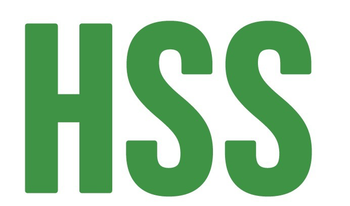
As the seasons change, so do the needs of your garden. Many gardeners make the mistake of sticking to their summer feeding schedule well into fall — only to find yellowing leaves, nutrient lockout, or weaker harvests as the weather cools.
Here’s the truth: cooler weather slows down nutrient uptake. If you keep feeding like it’s midsummer, your plants can easily get overfed, leading to salt buildup, root stress, and wasted nutrients.
That’s why creating a fall feeding frequency schedule is so important. By understanding how plant metabolism changes in autumn, you can adjust your routine to keep growth steady, prevent deficiencies, and finish the season with healthy, thriving crops.
In this guide, we’ll walk you through how to properly adjust feeding frequency in fall, what products to use, and how to create a late-season nutrient calendar that keeps your garden balanced and productive.
Why Feeding Frequency Matters More in the Fall
In summer, warm temperatures and long days keep your plants’ metabolisms racing. They burn through nutrients quickly, which means they need frequent feedings.
In fall, shorter days and cooler nights slow down plant uptake. If you keep feeding as often as before, your plants won’t be able to use everything — and that’s where problems begin.

How Cooler Weather Affects Plant Nutrient Uptake
Here’s what happens when temperatures drop:
-
Slower root metabolism → Roots don’t absorb nutrients as quickly.
-
Reduced transpiration → Less water movement = slower nutrient delivery.
-
Longer nutrient availability → Nutrients hang around in the soil longer, risking buildup.
This is why adjusting your feeding schedule in fall is critical.
Risks of Overfeeding in the Fall
Overfeeding is the #1 mistake gardeners make when the seasons change. It can cause:
-
Salt Buildup → Nutrients accumulate in the root zone, blocking absorption.
-
Nutrient Lockout → Excess nutrients prevent others from being absorbed.
-
Root Stress & Burn → Sensitive fall roots suffer from too much salt.
-
Weaker Harvests → Instead of bigger flowers, you get stunted growth and lower quality.

Signs You Need to Adjust Feeding Frequency
Watch out for these common indicators that your plants are getting too much food:
-
Leaf tips turning brown or “burnt”
-
Slowed growth despite regular feedings
-
Salt crust on soil or pots
-
Leaves curling or clawing
-
Deficiencies showing up even after feedings
If you see these, it’s time to tweak your schedule.
Building a Late-Season Feeding Schedule
Here’s a step-by-step approach to designing a fall feeding calendar:
Step 1: Evaluate Growth Stage
-
Vegging plants still need steady nitrogen but at a reduced frequency.
-
Blooming plants require a balanced nutrient approach with added support for flowers.
Step 2: Reduce Frequency, Not Quality
Instead of feeding every watering, try:
-
Every other watering for established plants.
-
Lighter doses more often for young plants.
Step 3: Balance Nutrients with Base A & B
Use Humboldts Secret Base A & B Nutrients as your foundation. They provide essential macro-nutrients but should be dialed back slightly in frequency as uptake slows.
Step 4: Supplement with CalMag & Iron
Fall is notorious for calcium and magnesium deficiencies, especially under cooler conditions. Add Humboldts Secret CalMag & Iron to stabilize nutrient balance and support root health.
Best Practices for Fall Feeding Success
-
Flush periodically with enzymes to prevent salt buildup.
-
Water less frequently to match slower plant uptake.
-
Use pH-balanced water to improve absorption.
-
Monitor plants weekly — let their leaves guide your feeding schedule.
-
Stay flexible — every fall season is different.
Spotlight on Humboldts Base Nutrients and CalMag & Iron
At Humboldts Secret Supplies, we’ve designed nutrients that make fall feeding simple and effective.
-
Humboldts Secret Base A & B → Complete macro-nutrient foundation for any feeding program.
-
Humboldts Secret CalMag & Iron → Extra calcium, magnesium, and iron to correct deficiencies common in cooler months.
Together, these products give you the perfect toolkit to maintain balance and avoid overfeeding this fall.

Common Fall Feeding Mistakes to Avoid
-
Feeding too often — summer schedules don’t apply in fall.
-
Skipping CalMag — deficiencies are more common in cooler weather.
-
Not flushing — salts build up quickly in fall soils.
-
Ignoring plant signals — leaves often reveal nutrient needs first.
-
Overwatering — cooler, damp nights slow evaporation.
Fall is about finishing strong, not pushing harder. By adjusting your feeding frequency, balancing nutrients, and watching for early warning signs, you can keep your plants healthy and thriving right through the season’s finish.
Start building your fall feeding plan today with Base A & B and CalMag & Iron.
And don’t forget to check out our full range of gardening tips and resources to guide you through every season.
